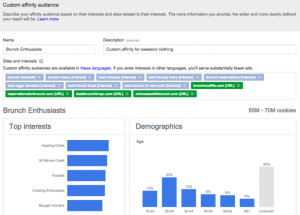Getting Data on Sales Prospects Using Public Sources
As you know, sales prospecting is deeply intertwined with research. The information that you collect can inform your pitch, build rapport with the prospect, and shape your messaging. Ultimately, your research will drive your sales numbers.
Yet prospect research, at its best, combination an understanding of their professional life and personal background for a holistic view of their priorities and preferences. The more information that you gather in advance, the better prepared you will be for a sales call. You’ll have the details to drive decision making and enough background to organically build a conversation.
Challenges of Sales Prospecting
Today, there is no shortage of information. With Google at your fingertips, it’s possible to go down the rabbit hole to endlessly research a sales lead. However, there are only a limited number of hours in a day, and inefficient researching will increase your acquisition costs and decrease the ROI that you could see from your sales calls.
That’s why it’s important to spend your time wisely by streamlining the way that you gather sales intelligence. Successful sales agents know to focus their research on centralized portals of information. In particular, these two public data sources are essential touchstones for sales agents.
Researching Professional History with Public Data
The professional network, Linkedin, is a treasure trove of useful information about prospects.
Typically, you can learn where your prospect works, what their responsibilities are, and their group affiliations.
You may even be able to deduce relevant interests by seeing what they’ve shared. For example, if they’re sharing articles about corporate breaches, you could plan your pitch to preemptively emphasize your product’s privacy and security protocols.
Best Public Source for Researching Personal Backgrounds
Searching for your prospect on PeopleFinders can reveal a large set of background details. This can help your communications to be professional, informed, and accurate.
A public record search can help you to understand the background of your prospect. You can learn a prospect’s most recent contact information such as addresses, phone numbers, and email addresses. You can also get background information such as birth info, marriage records, and divorce records.
While the information that you learn about your sales prospect won’t necessarily be a part of your sales pitch, it can help inform your conversations. For example, learning of a prospect’s Midwestern roots can help you to build rapport by choosing similarly located example scenarios. Similarly, learning of a prospect’s divorce can help you better understand the prospect’s potential financial obligations.
Another aspect of understanding your sales prospect is to look at their criminal history. Performing a criminal records search on PeopleFinders will scour all public data sources to reveal arrest records, convictions, misdemeanors, felonies, and sex offender status.
Information is power, and with a search on PeopleFinders, you’ll have the information you need at your fingertips.
What Happens If You Use Poor Public Sources?
You probably have already guessed that the accuracy of your prospect data is key. However, this point cannot be understated.
Your ability to tailor your pitch is entirely depended on the reliability of the information that you gather. Inaccurate information could mean that your pitch misses the mark and fails to resonate with the prospect. Additionally, it’s a lost opportunity because you are not maximizing your leverage with accurate information.
Moreover, getting your messaging wrong could shift the conversation from the product your selling to correcting your misconceptions.
Both LinkedIn and PeopleFinders are known for their accuracy. LinkedIn’s information has been shared by the prospect themselves so you know it’s accurate. PeopleFinders’ accuracy is built through information aggregation gathered from countless public sources. This process drives its ability to provide current data on just about every adult in the U.S.
Learn more about how you can use PeopleFinders to get data on your sales prospects.
About the Author: Rob Miller
Rob Miller founded PeopleFinders in 1999. The company has been listed in Deloitte’s Technology Fast 50 for the Silicon Valley noting that it was one of very few companies to see such fast growth rates.
(66)





